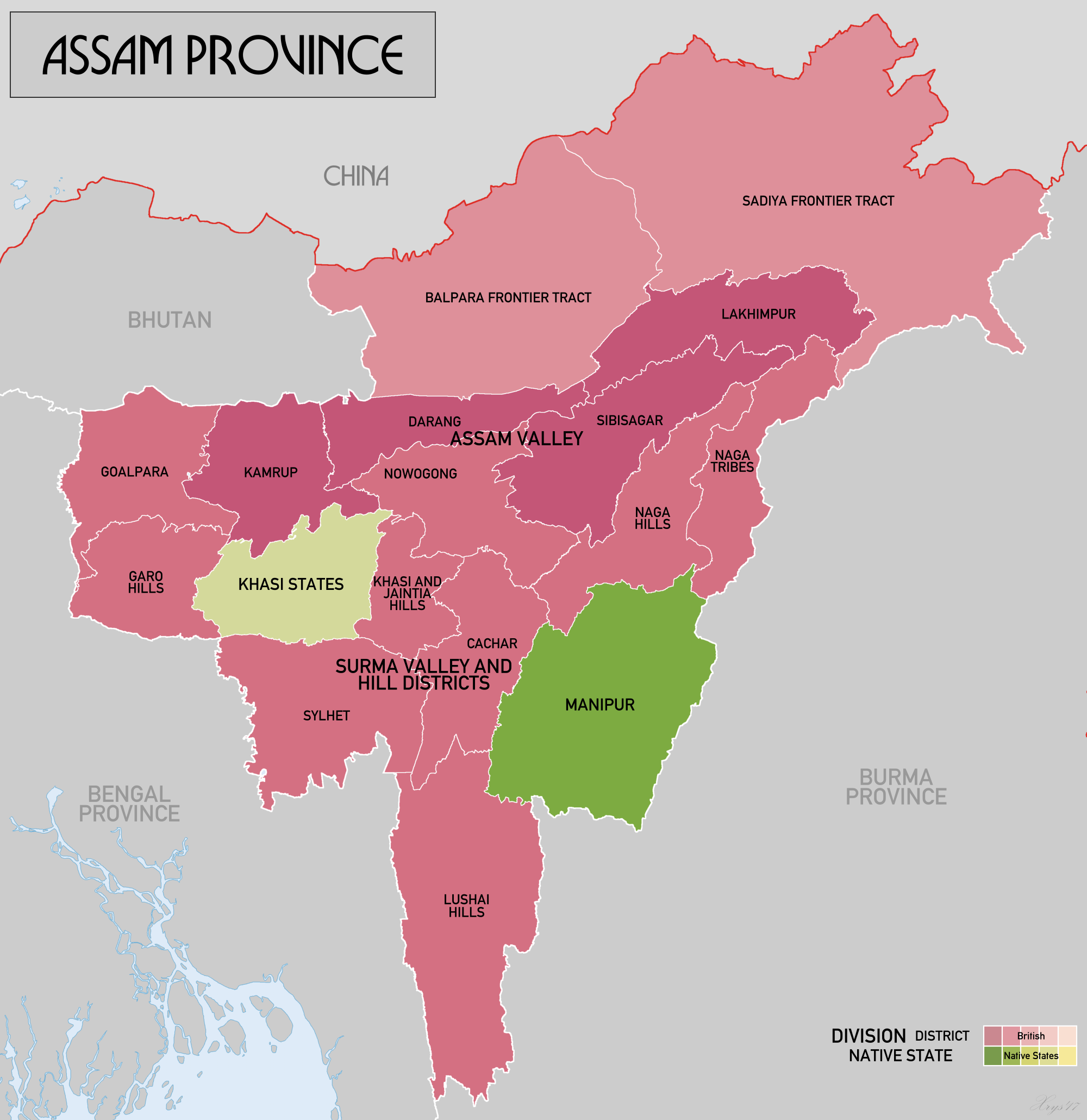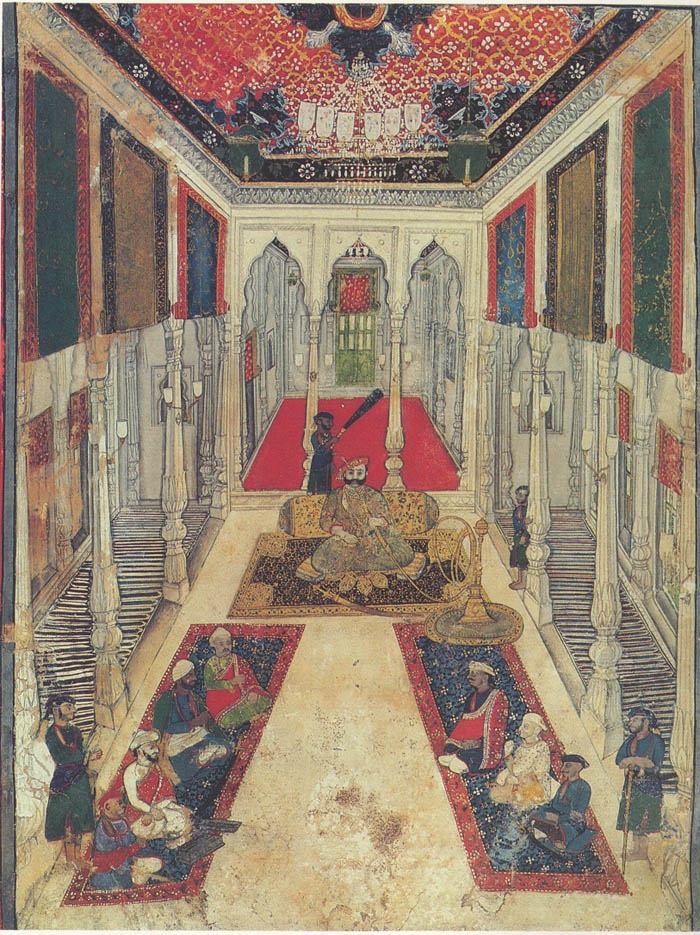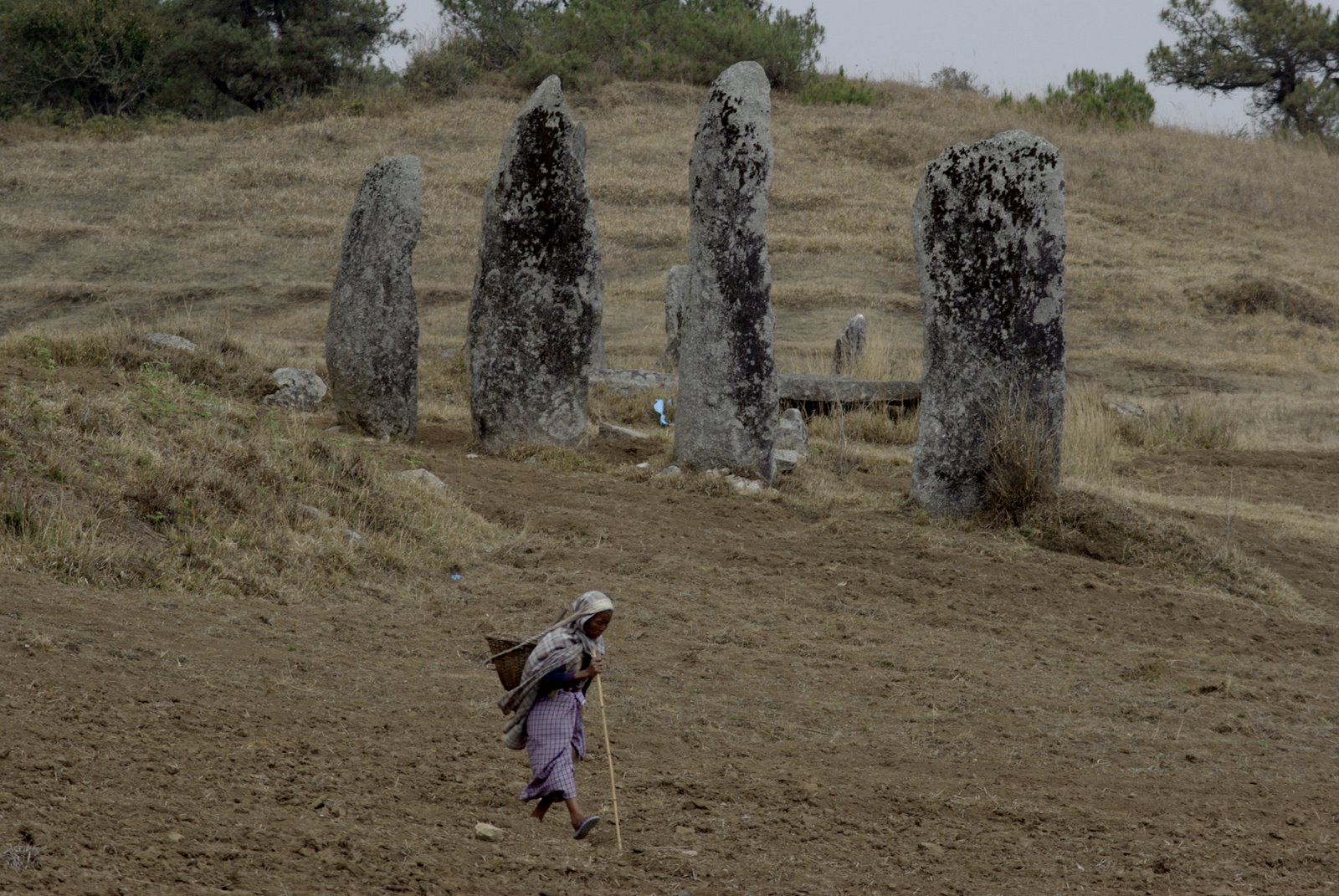|
Dharamapasha
Dharmapasha ( bn, ধর্মপাশা, Dhormopasha), also spelled as Dharampasha or Dharamapasha, is an upazila of Sunamganj District in the Division of Sylhet, Bangladesh. Geography Dharamapasha is located at . It has 28368 households and total area 496.03 km2. It is located on the banks of the Kangsha River, close to the haor areas. Tānguār Hāor, the largest haor of Bangladesh, lies between the upazilas of Dharmapasha and Tahirpur. Other haors, rivers and beels in Dharmapasha include Surma River, Tagār Hāor, Dhārām Hāor, Ghāglājur River, Sārdā Bil, Kaimer Dair, Dhānkuniyā Hāor, Sonāmaral Hāor, Rāuwār Bil, Shiyāldighā Bil, Pākertalā Bil, Phirāgāng Bil, Dharani Bil, Jāldharā Bil, Sanuā Hāor, Pashwa River, Chhātidharā River, Rāklā River, Baulāi River, Chepta River, Nowanadi River and Helainna River. History During the reign of the Mughal emperor Aurangzeb in around 1691, Mahamanikya Datta of Hooghly set off for Assam. On his jour ... [...More Info...] [...Related Items...] OR: [Wikipedia] [Google] [Baidu] |
Sunamganj-1
Sunamganj-1 is a constituency represented in the Jatiya Sangsad (National Parliament) of Bangladesh since 2008 by Moazzem Hossain Ratan of the Awami League. Boundaries The constituency encompasses Dharamapasha, Jamalganj, and Tahirpur upazilas. History The constituency was created in 1984 from a Sylhet constituency when the former Sylhet District was split into four districts: Sunamganj, Sylhet Sylhet ( bn, সিলেট) is a metropolitan city in northeastern Bangladesh. It is the administrative seat of the Sylhet Division. Located on the north bank of the Surma River at the eastern tip of Bengal, Sylhet has a subtropical climate an ..., Moulvibazar, and Habiganj. Members of Parliament Elections Elections in the 2010s Elections in the 2000s Elections in the 1990s References External links * Parliamentary constituencies in Bangladesh Sunamganj District {{Bangladesh-geo-stu ... [...More Info...] [...Related Items...] OR: [Wikipedia] [Google] [Baidu] |
Sunamganj District
Sunamganj ( bn, সুনামগঞ্জ) is a district located in north-eastern Bangladesh within the Sylhet Division. History In the ancient period, Sunamganj was part of the Laur Kingdom. After the conquest of Sylhet (Kingdom of Gauiurh) in 1303 by Muslims under the spiritual guidance of Shah Jalal, Shah Kamal Quhafah established a capital in Shaharpara with the aid of his twelve disciples and his second son, Shah Muazzamuddin Qureshi, who also maintained a second sub-administration office at Nizgaon on the bank of the river Surma, present day Shologhar (there is now Shologhar Masjid and madrasa) in Sunamganj town, which was administered by one of his descendants. Between the latter part of 1300 CE and 1765 CE, the present-day Sunamganj district was a part of Iqlim-e-Muazzamabad, i.e. the state of Muazzamabad, which was an independent state until 1620 when it was conquered by the mighty Mughal of Delhi. The last sultan of Muazzamabad was Hamid Qureshi Khan, who was a d ... [...More Info...] [...Related Items...] OR: [Wikipedia] [Google] [Baidu] |
Upazilas Of Bangladesh
An ''upazila'' ( bn, উপজেলা, upôzela, lit=sub-district pronounced: ), formerly called ''thana'', is an administrative region in Bangladesh, functioning as a sub-unit of a district. It can be seen as an analogous to a county or a borough of Western countries. Rural upazilas are further administratively divided into union council areas (union parishads). Bangladesh ha495 upazilas(as of 20 Oct 2022). The upazilas are the second lowest tier of regional administration in Bangladesh. The administrative structure consists of divisions (8), districts (64), upazilas (495) and union parishads (UPs). This system of devolution was introduced by the former military ruler and president of Bangladesh, Lieutenant General Hossain Mohammad Ershad, in an attempt to strengthen local government. Below UPs, villages (''gram'') and ''para'' exist, but these have no administrative power and elected members. The Local Government Ordinance of 1982 was amended a year later, redesignati ... [...More Info...] [...Related Items...] OR: [Wikipedia] [Google] [Baidu] |
Sylhet Division
Sylhet Division ( bn, সিলেট বিভাগ) is the northeastern division of Bangladesh. It is bordered by the Indian states of Meghalaya, Assam and Tripura to the north, east and south respectively, and by the Bangladeshi divisions of Chittagong to the southwest and Dhaka and Mymensingh to the west. Prior to 1947, it included the subdivision of Karimganj (presently in Barak Valley, India). However, Karimganj (including the thanas of Badarpur, Patharkandi and Ratabari) was inexplicably severed from Sylhet by the Radcliffe Boundary Commission. According to Niharranjan Ray, it was partly due to a plea from a delegation led by Abdul Matlib Mazumdar. Etymology and names The name ''Sylhet'' is an anglicisation of ''Shilhot'' (শিলহট). Its origins seem to come from the Sanskrit words শিলা ''śilā'' (meaning 'stone') and হট্ট ''haṭṭa'' (meaning 'marketplace'). These words match the landscape and topography of the hilly region. The shila st ... [...More Info...] [...Related Items...] OR: [Wikipedia] [Google] [Baidu] |
Upazila
An ''upazila'' ( bn, উপজেলা, upôzela, lit=sub-district pronounced: ), formerly called ''thana'', is an administrative region in Bangladesh, functioning as a sub-unit of a district. It can be seen as an analogous to a county or a borough of Western countries. Rural upazilas are further administratively divided into union council areas (union parishads). Bangladesh ha495 upazilas(as of 20 Oct 2022). The upazilas are the second lowest tier of regional administration in Bangladesh. The administrative structure consists of divisions (8), districts (64), upazilas (495) and union parishads (UPs). This system of devolution was introduced by the former military ruler and president of Bangladesh, Lieutenant General Hossain Mohammad Ershad, in an attempt to strengthen local government. Below UPs, villages (''gram'') and ''para'' exist, but these have no administrative power and elected members. The Local Government Ordinance of 1982 was amended a year later, redesigna ... [...More Info...] [...Related Items...] OR: [Wikipedia] [Google] [Baidu] |
Das (surname)
Das (translation: "devotes of God" is a common last name in South Asia, among adherents of Hinduism and Sikhism, as well as those who converted to Islam or Christianity. It is a derived from the Sanskrit word Dasa (Sanskrit: दास) meaning servant, "devotee", or "votary". "Das" may be inferred to be one who has surrendered to God. Nowdays it is used in upnaam (Surname) of Vaishnav. In Bengal, Bihar and Jharkhand, the surname "Das" is used by the Kayasthas, Mahishya, Dhobi and Patni communities. In Assam the Kaibarta, the Patni, the Koch-Rajbanshi and other schedule caste communities also use Das as their surname. In Odisha, the 'Das' surname is used by the Gopal and Karan castes, also 'Dash' is used by the Brahmins. Similarly, 'Das' is also a common surname among Bengali Kayastha apart from other Bengali communities. In the Punjab region of India and Pakistan, they generally belong to the Brahmin caste. Notable people * Abhishek Das, Indian football player * Ajit Das, ... [...More Info...] [...Related Items...] OR: [Wikipedia] [Google] [Baidu] |
Assam
Assam (; ) is a state in northeastern India, south of the eastern Himalayas along the Brahmaputra and Barak River valleys. Assam covers an area of . The state is bordered by Bhutan and Arunachal Pradesh to the north; Nagaland and Manipur to the east; Meghalaya, Tripura, Mizoram and Bangladesh to the south; and West Bengal to the west via the Siliguri Corridor, a wide strip of land that connects the state to the rest of India. Assamese language, Assamese and Boro language (India), Boro are the official languages of Assam, while Bengali language, Bengali is an additional official language in the Barak Valley. Assam is known for Assam tea and Assam silk. The state was the first site for Oil well, oil drilling in Asia. Assam is home to the one-horned Indian rhinoceros, along with the wild water buffalo, pygmy hog, tiger and various species of Asiatic birds, and provides one of the last wild habitats for the Asian elephant. The Economy of Assam, Assamese economy is aided by w ... [...More Info...] [...Related Items...] OR: [Wikipedia] [Google] [Baidu] |
Jagir
A jagir ( fa, , translit=Jāgir), also spelled as jageer, was a type of feudal land grant in the Indian subcontinent at the foundation of its Jagirdar (Zamindar) system. It developed during the Islamic rule era of the Indian subcontinent, starting in the early 13th century, wherein the powers to govern and collect tax from an estate was granted to an appointee of the state.Jāgīrdār system: INDIAN TAX SYSTEM Encyclopædia Britannica (2009) The tenants were considered to be in the servitude of the jagirdar. There were two forms of jagir, one being conditional and the other unconditional. The conditional jagir required the governing family to maintain troops and provide their service to the state when asked. The land grant w ... [...More Info...] [...Related Items...] OR: [Wikipedia] [Google] [Baidu] |
Zamindar
A zamindar (Hindustani: Devanagari: , ; Persian: , ) in the Indian subcontinent was an autonomous or semiautonomous ruler of a province. The term itself came into use during the reign of Mughals and later the British had begun using it as a native synonym for “estate”. The term means '' land owner'' in Persian. Typically hereditary, from whom they reserved the right to collect tax on behalf of imperial courts or for military purposes. During the period of British colonial rule in India many wealthy and influential zamindars were bestowed with princely and royal titles such as ''maharaja'' ( great king), ''raja/ rai'' (king) and '' nawab''. During the Mughal Empire, zamindars belonged to the nobility and formed the ruling class. Emperor Akbar granted them mansabs and their ancestral domains were treated as jagirs. Some zamindars who were Hindu by religion and brahmin or kayastha or kshatriya by caste were converted into Muslims by the Mughals. During the coloni ... [...More Info...] [...Related Items...] OR: [Wikipedia] [Google] [Baidu] |
Tiger Hunting
Tiger hunting is the capture and killing of tigers. Humans are the tigers' most significant predator, and illegal poaching is a major threat to the tigers. The Bengal tiger is the most common subspecies of tiger, constituting approximately 80% of the entire tiger population in Indian Sub-Continent, and is endemic to Bangladesh, Bhutan, Myanmar, Nepal, and India. Tigers have mythological, cultural and religious significance in these countries. Foreign invaders saw hunting of Tigers as a symbol of masculinity and an adventurous sporting event. It has been hunted in these countries for centuries. In 1924, the Tiger population in Asia was estimated to be more than 100,000. However, within less than a hundred years, it had declined to fewer than 3,200. Tiger has historically been a popular big game animal and has been hunted for prestige as well as for taking trophies. Extensive poaching has continued even after such hunting became illegal and legal protection was provided to the tige ... [...More Info...] [...Related Items...] OR: [Wikipedia] [Google] [Baidu] |
Khasis
The Khasi people are an ethnic group of Meghalaya in north-eastern India with a significant population in the bordering state of Assam, and in certain parts of Bangladesh. Khasi people form the majority of the population of the eastern part of Meghalaya, that is Khasi Hills, constituting 78.3% of the region's population, and is the state's largest community, with around 48% of the population of Meghalaya. They are among the few Austroasiatic-speaking peoples in South Asia. The Khasi tribe holds the distinction of being one of the few remaining matriarchal tribes of the world. Under the Constitution of India, the Khasis have been granted the status of Scheduled Tribe. History Khasi mythology Khasi mythology traces the tribe's original abode to ("The Seven Huts"). According to the Khasi mythology, (God, the Lord Master) had originally distributed the human race into 16 heavenly families (). However, seven out of these 16 families were stuck on earth while the other 9 in heaven ... [...More Info...] [...Related Items...] OR: [Wikipedia] [Google] [Baidu] |
Islam
Islam (; ar, ۘالِإسلَام, , ) is an Abrahamic monotheistic religion centred primarily around the Quran, a religious text considered by Muslims to be the direct word of God (or ''Allah'') as it was revealed to Muhammad, the main and final Islamic prophet.Peters, F. E. 2009. "Allāh." In , edited by J. L. Esposito. Oxford: Oxford University Press. . (See alsoquick reference) " e Muslims' understanding of Allāh is based...on the Qurʿān's public witness. Allāh is Unique, the Creator, Sovereign, and Judge of mankind. It is Allāh who directs the universe through his direct action on nature and who has guided human history through his prophets, Abraham, with whom he made his covenant, Moses/Moosa, Jesus/Eesa, and Muḥammad, through all of whom he founded his chosen communities, the 'Peoples of the Book.'" It is the world's second-largest religion behind Christianity, with its followers ranging between 1-1.8 billion globally, or around a quarter of the world' ... [...More Info...] [...Related Items...] OR: [Wikipedia] [Google] [Baidu] |







.jpg)